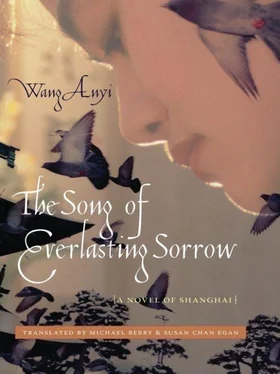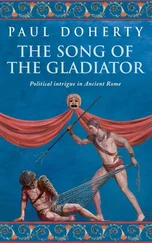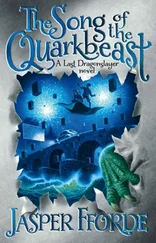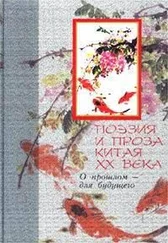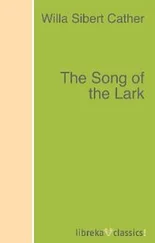In 2000 the novel was awarded China’s highest literary honor, the Mao Dun Prize, which is given only once every five years, among numerous other literary awards in Taiwan and Hong Kong. It was around the same time that Asia Weekly assembled a panel of literary critics from around the world to determine the one hundred best works of twentieth-century Chinese fiction and The Song of Everlasting Sorrow was ranked number 39 on the list. Further testimony to the novel’s importance comes in its multitude of popular-culture manifestations. The year 2003 saw a major stage adaptation of the book by Zhao Yaomin, which received starred reviews after its Shanghai premiere. In 2004 the novel became one of the first Chinese titles to be released on compact disc as an audio book. And 2005 saw the release of a major motion picture adaptation under the title Everlasting Regret , directed by Hong Kong filmmaker Stanley Kwan and produced by Jackie Chan. The film, which starred Sammi Cheng, Tony Leung Ka-Fai, and Hu Jun, offered stunning cinematography and sumptuous set design, but lacked the nuances, narrative breadth, and emotional power of the original novel. The same year, Kwan also produced To Live to Love, a thirty-five-episode television miniseries adaptation (directed by Ding Hei), which was accompanied by the publication of a teleplay novelization penned by Jiang Liping and a separate illustrated edition with drawings by Weng Ziyang. In all their stunning array, the popular reinventions of Wang Qiyao in the decade since Wang Anyi brought her to life have not only offered new alternatives for this character’s fictional universe, but also placed her alongside real-life icons like Ruan Lingyu and Zhou Xuan as one of the most potent cultural symbols of old Shanghai.
One of the key pitfalls encountered by both the film and television adaptations of the novel stems from the need on the part of the producers to continually reintroduce characters — such as Mr. Cheng, Jiang Lili, and Director Li — for increased dramatic effect and continuity of story, even when those characters pass away in the novel. This stands in contrast to the character Wang Qiyao, who, as conceived by Wang Anyi, is a woman incapable of maintaining enduring human relationships. People come and go throughout her life, but she can never hold on to them — not even her own mother or daughter — and this is precisely one of the qualities that make this character so unique. . and stain her life with sorrow.
Cycles of Sorrow and Copies of Nostalgia
Whereas visual adaptations of The Song of Everlasting Sorrow have gone to great lengths to strengthen the interpersonal relationships in Wang Qiyao’s life (such as her virtually nonexistent bond with her parents) and reintroduce secondary characters back into her life (such as Mr. Cheng and Director Li, who both die in the novel), the original work already has its own internal philosophy of narrative continuity, one far more subtle and sophisticated. In contrast to the rather forced reintroduction of characters in the film and television miniseries, Wang Anyi’s novel instead weaves a complicated web in which relationships, scenarios, and even characters serve as counterpoints to earlier incarnations of themselves. The effect is a form of literary déjà vu that works simultaneously on the interior as well as the exterior levels of the text as both the novel’s characters and we the readers try to navigate through the complex human networks that Wang Qiyao alternately constructs, abandons, and reconstitutes by way of proxy throughout her life.
One of the earliest examples of this narrative pattern occurs in part I, when Wang Qiyao’s best friend Wu Peizhen is “replaced” by Jiang Lili. What may appear on the surface as a new bond formed in the wake of a fallout with her former best friend actually serves as a prelude to a cyclical pattern of relationships that will recur throughout Wang Qiyao’s life. As the novel progresses, these patterns become most evident in the series of love triangles that dominate each respective section, involving Mr. Cheng and Director Li in part I, Uncle Maomao and Sasha in part II, and Old Colour and Long Legs in part III. These romances are, in each case, further conflated by the women in Wang’s life — for instance, when Weiwei and Zhang Yonghong appear in part III as shadowy reminders of Wu Peizhen and Jiang Lili from the novel’s opening.
The situational motifs that echo and reverberate throughout The Song of Everlasting Sorrow are not so much base repetitions as subtle de-evolutions that further illustrate the inner world of the heroine. Cycles of repetition reflect not only Wang Anyi’s ingenious literary design, but the heroine Wang Qiyao’s tragic quest to reclaim her memories, revisit her past, and relive her lost loves. It is tragic because, with each affair, with each romance, more of herself gets stripped away and destroyed. From innocence (Mr. Cheng) to practicality (Director Li) and from deception (Sasha) to becoming a true object of “imaginary nostalgia” (Old Colour), in the end Wang Qiyao is no longer even the object of desire, but merely a means to an end (Long Legs). This is, once again, not simply the author’s literary technique at work, but an expression of the psychology of Wang Qiyao, who is continually searching for vehicles to relive her past, no matter how futile that attempt may be. Her song of everlasting sorrow is a canon that, instead of growing stronger with each refrain, grows increasingly weaker and desperate.
The same cyclical logic also manifests itself through characters who appear as hazy reflections of figures from earlier chapters that have long since faded from Wang Qiyao’s life and hence the novel’s narrative. Just as the author observes, “Everything in this city has a copy, and everything has someone who leads the way,” 2the characters, too, have their copies and clones. One of the most interesting examples comes in the form of Zhang Yonghong, Weiwei’s best friend and Wang Qiyao’s confidante. If there is a true double for Wang Qiyao herself, it is not her daughter but Zhang Yonghong, the most fashionable girl on Huaihai Road in the eighties. But even as Zhang Yonghong masters all the fashion secrets, dance steps, and kernels of Western culture from Wang Qiyao, she can never truly measure up. And how can she? Born during the Cultural Revolution — more than two decades too late to experience the real “old Shanghai”—her identity is branded by her name, “Yonghong,” or “Eternally Red,” a permanent reminder of the socialist cradle from which she came.
The longing for Shanghai’s pre-liberation days, which form the setting of part I and the object of Old Colour’s obsession in part III, has led many critics to comment on the place of nostalgia in the novel’s framework. These, however, are readings that Wang Anyi sees as detracting from the work’s original vision:
The part of the book in which The Song of Everlasting Sorrow provides the most nostalgic material appears in the section set during the 1940s, but that is entirely fictionalized. I have absolutely no personal experience relating to that era and therefore absolutely no psychological reason to feel nostalgic. All I wanted to do was to create a most majestic stage for Wang Qiyao to live out the few good days she had in her life. . And so The Song of Everlasting Sorrow was not completed under the thrust of simple nostalgic sentiments; moreover, what it contains and represents cannot be embraced by the term “nostalgia.” 3
While Wang Anyi has repeatedly rejected descriptions of her novel as a work of nostalgia — referring to the glorious world of old Shanghai as embodied by foreign concessions, calendar girls, and the bright lights of the Bund — the drive to recreate relationships throughout the novel points instead to her heroine’s own very personal form of nostalgic longing. It is a nostalgia that drives Wang Qiyao to ceaselessly attempt to re-create earlier moments in her life. In Wang Anyi’s literary world, history seems to repeat itself. . but it doesn’t. And in the end it simply produces flawed copies and imperfect replicas of itself, wherein the original patterns and scenarios appear increasingly distant. But isn’t that what nostalgia is all about? An incurable longing for what is lost but can never be recovered.
Читать дальше
